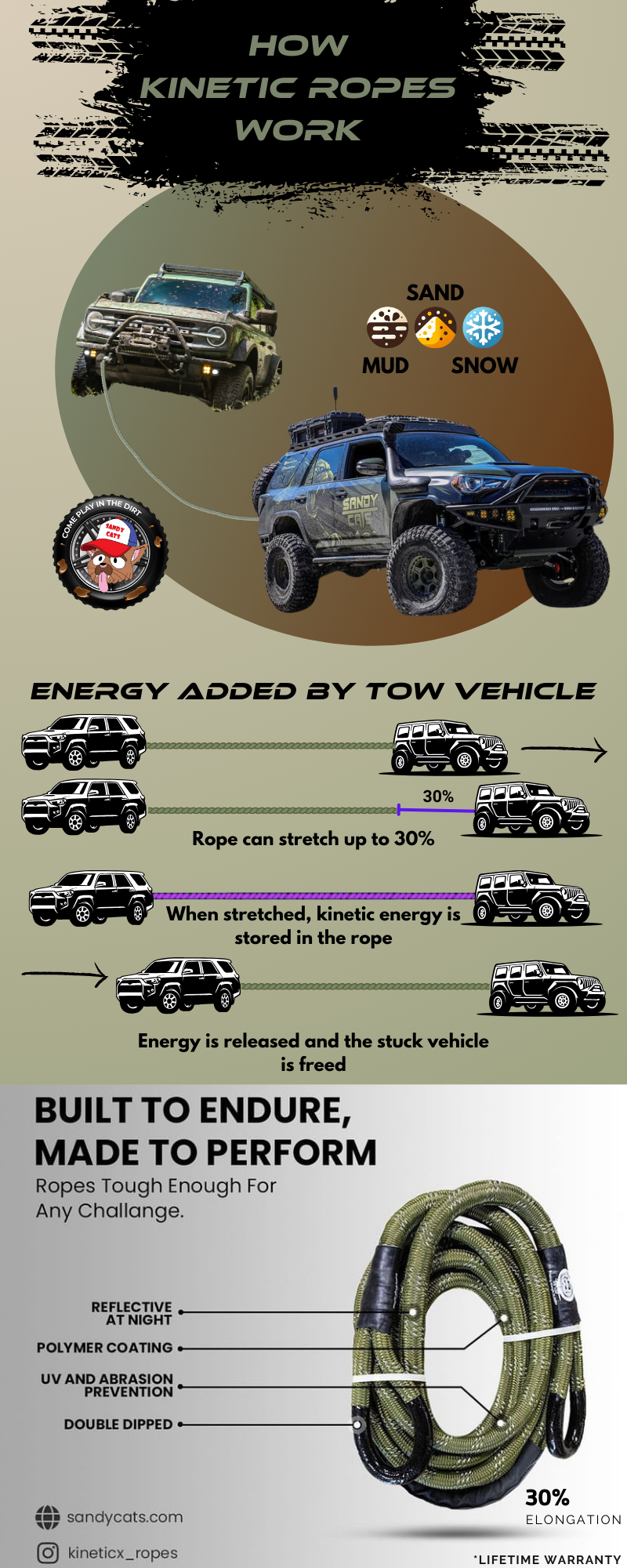Why A Kinetic Rope
When it comes to off-road adventures, getting stuck is often part of the journey. That's where a kinetic rope comes into play. Unlike traditional tow straps, kinetic ropes offer a dynamic solution for vehicle recovery, turning a challenging situation into a manageable one. This blog post dives into how a kinetic rope works and why it's a must-have for any off-road enthusiast.

The Basic Principle of a Kinetic Rope
At its core, a kinetic rope is designed to stretch under tension. When a vehicle gets stuck, the kinetic rope is attached between the stuck vehicle and the rescue vehicle. As the rescue vehicle moves forward, the rope stretches, storing kinetic energy. This energy is then released in a controlled manner, creating a powerful and smooth pull that helps extract the stuck vehicle. The key lies in the rope's ability to stretch and recoil.
The Science Of A Kinetic Rope
The science behind a kinetic rope is rooted in the principles of physics. The rope's elasticity allows it to function like a rubber band. When stretched, potential energy is stored within the rope's fibers. As the rope contracts, this stored energy is converted into kinetic energy, providing a more powerful and gradual pull compared to static tow straps. This process reduces the shock load on both vehicles, minimizing the risk of damage.
The Material of Kinetic Rope
Kinetic ropes are typically made from Nylon due to its high tensile strength and elasticity. The rope's inner core, usually made of Nylon 6, is responsible for its stretchiness, while the outer layer provides protection from abrasion and UV damage. This combination allows for the necessary stretch and recoil dynamics, making the rope both durable and effective.
The Kinetic Rope Secret
Stretch and Recoil: The Key to Effective Recovery
The effectiveness of a kinetic rope lies in its ability to stretch up to 30% of its length and then recoil back to its original size. This stretching and recoiling action provides a smoother, more controlled recovery. It reduces the jerkiness and potential vehicle damage often associated with traditional tow straps.
Advantages Over Traditional Tow Straps:
1. Reduced Shock Load: The gradual transfer of kinetic energy reduces the sudden jolt to both vehicles, lowering the risk of damage.
2. Increased Pulling Power: The stored energy in the rope translates into greater pulling power, making it easier to recover heavier vehicles.
3. Versatility in Various Terrains: Whether you’re stuck in mud, sand, or snow, a kinetic rope adapts to different recovery scenarios.
Understanding how a kinetic rope works illuminates why it is an indispensable tool for off-road recovery. Its unique stretch-and-recoil mechanism, combined with durable materials, offers a safer and more effective way to handle vehicle recoveries. Whether you're a seasoned off-roader or just starting, having a kinetic rope in your recovery kit is a wise investment in your off-road adventures.
Ready to enhance your off-road recovery arsenal? Check out our selection of high-quality KineticX rope line at Sandycats.com and prepare for your next off-road challenge with confidence.
Share your experiences or questions in the comments below – we love hearing from our community!


